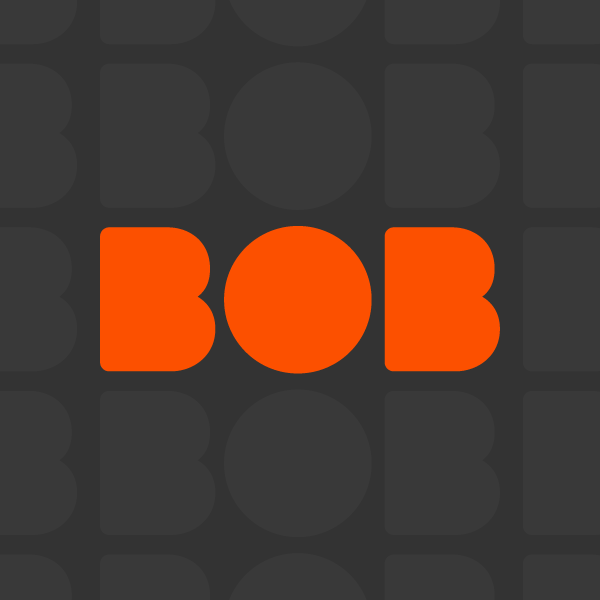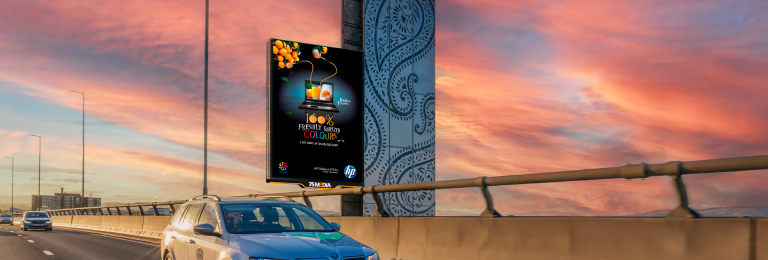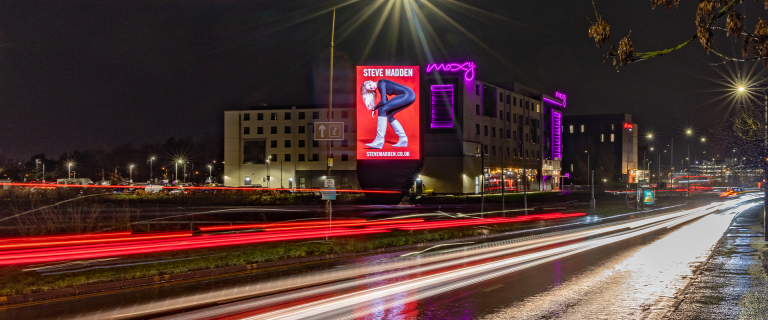For brands or business-owners, the Millennial generation is the single most influential target market in the modern age.
Referring to individuals born between 1982 and 2000, this demographic is also beginning to peak in terms of impact, size and, most importantly, spending power.
There are an estimated 13.8 million Millennials in the UK, while this demographic also represents the largest generation in Western history across the globe.
This translates into a vast and motivated target segment, and one that has finally come of age as younger Millennials turn 17 and approach the cusp of adulthood.
There has therefore never been a better time to target this active, tech savvy and social generation, with out-of-home (OOH) advertising providing one of the most effective and engaging marketing methods.
With this in mind, the question that remains is how brand should look to leverage this medium to share their message successfully with Millennials?
Bridging the Gap Between the Virtual and Corporeal Worlds: Understanding the Impact of OOH
In some respects, you could be forgiven for thinking that Millennials would be most receptive to online and mobile marketing methods.
While there is some truth in this, this does not reflect the true outlook of Millennials or the behaviour that they showcase as active consumers.
Firstly, it is important to note that the Millennials generation tends to curate their own content, as they look to identify authentic and transparent brands with which to engage.
In fact, brand authenticity is second only to loyalty discounts when Millennials choose branded partners, so there is a clear need for businesses to develop an honest voice that presents a clear value proposition.
This outlook has impacted on the effectiveness of mobile marketing, as an estimated 63% of savvy Millennials block branded advertisements on their devices as they strive to avoid spammy, unsolicited and overly-promotional content.
Instead, they are far more likely to engage initially with OOH advertising, which often promotes concise and visually appealing messaging in a totally organic background setting.
In the case of traditional billboards, this type of advertising is also omni-present, meaning that it provides sustained exposure without every deterring Millennial customers.
It is this type of advertising that encourages Millennials to interact further with brands, with individuals 17% more likely to engage with a company through their mobile device after seeing an OOH ad.
Furthermore, OOH is thought to drive a significant 140% uplift in smartphone brand interactions among Millennials, compared to 17% across other marketing channels.
As we can see, OOH has effectively bridged the gap between virtual and corporeal advertising, enabling brands to successfully target Millennials and increase their conversion rate in the process.
Where Should You Target Millennials With OOH?
The previous point highlights the supposed transparency and trustworthy nature of OOH, as well as its efficiency in terms of driving conversions.
An estimated 56% of Millennials trust this medium, for example, while 58% are inclined to take further action after seeing a billboard or post advertisement.
Despite the natural advantages of OOH among Millennials, execution is key if you are to achieve success.
More specifically, you will need to identify the best geographical locations through which to target this audience, in order to optimise exposure and encourage customers to take direct action through their mobile, tablet or laptop.
While you precise strategy will vary depending on the nature of your product or service, there are some general rules to keep in mind.
Approximately 37% of Millennials prefer visiting shopping centres to buying online, for example, making local retail parks with a high level of footfall potentially fruitful advertising locations.
This can be even more effective if you advertise close to one of your retail outlets, as it enables Millennials to engage with your brand and take direct action simultaneously.
Colleges and universities are also excellent locations for targeting Millennials, particularly younger consumers who have recently come of age.
Those aged between 17 and 34 are expected spend more than £200 billion annually from next year onwards, with the younger members of this demographic increasingly likely to take action after enjoying sustained interaction with specific brands through OOH.
Educational facilities that are close to popular bars and restaurants are even more effective, as they allow brands to strategically target the social and active nature of the Millennial audience.
Some college and university locations may also be cheaper than retail parks or shopping centres, so this may represent a more cost-effective form of advertising for your brand. For a breakdown of the typical costs involved, see our pricing guide on billboard advertising.
How Can You Capture the Attention of Millennials Through OOH?
With an understanding of the medium and your locations booked, the final step is to ensure that your content boasts the creativity, focus and value proposition to engage arguably the most savvy (and lucrative) generation in history.
One of your main objectives should be to create an innovative and creative advert, as this taps into the typical Millennials’ ability to create, share and curate content. Remember, this generation has access to more content creation tools that any other in history, including social media channels such as Snapchat, Pinterest, YouTube and Instagram.
These channels have also provided platforms from which this content can be shared with the public, as other pieces are curated to appease individual tastes and preferences.
There are two ways in which you can leverage this.
Firstly, you could deploy an in-house or freelance designer to create a visually stunning OOH ad, and one that combines colour, imagery and text to develop a truly unique proposition.
Conversely, you can follow the route take by major brands such as Starbucks, who recently launched a campaign that offered prizes for the best doodles drawn on one of their cups.
Not only were customers allowed to indulge their own creativity and interact with the brand, but their efforts were also shared prolifically through social media and on OOH advertising materials.
The winning design was also printed on a limited run on reusable cups, creating an even greater level of engagement between the brand and its Millennial customers.
Local advertising is also a great way of engaging Millennials, particularly when brands look to reward customers and drive greater loyalty.
The footwear retailer Keds recently ran an OOH campaign at London’s Westfield Shopping Centre, where the brand has an established retail outlet.
More specifically, they offered a 20% discount voucher to shoppers who logged on to the businesses Wi-Fi page through a billboard screen, targeting Millennials directly and driving a 28% upturn in sales as the local store.
The Last Word: Leveraging OOH to Target Millennials
While Millennials may be the single most tech savvy consumer generations of all time, they are increasingly likely to be engaged by OOH advertising. Not only does this medium build trust among customers and drive higher levels of conversion for brands, but it also bridges the gap between virtual marketing channels and physical stores.







